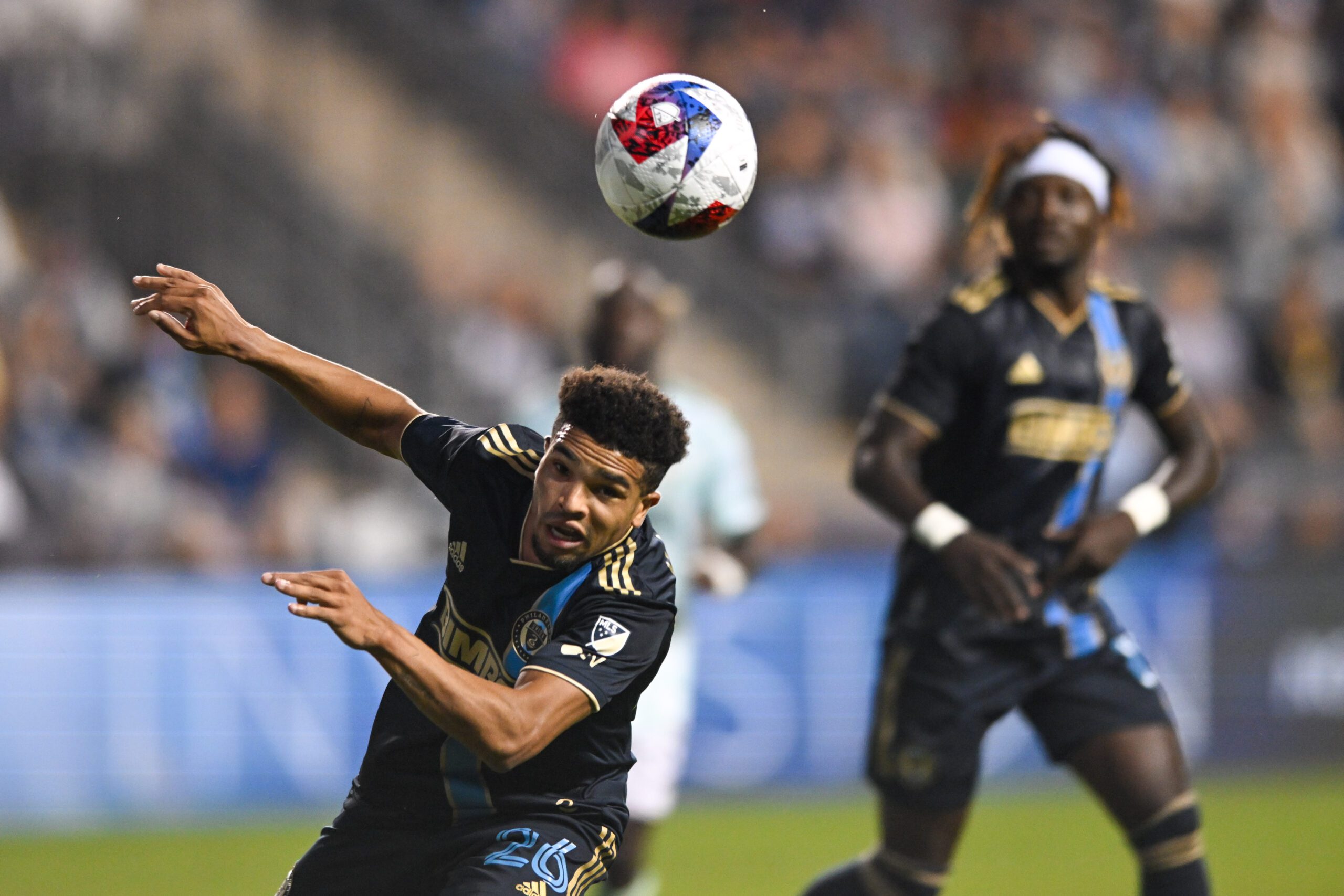Brotherly Game
Jim Curtin is right: The handball rule sucks

The Philadelphia Union has had a handball problem.
In the team’s last two games, the Union has given up two penalty kicks, both from handball calls. Against the Columbus Crew on Saturday, that penalty kick was the game-tying goal. Against Atlanta United on Wednesday, Thiago Almada’s penalty kick served was Atlanta’s first goal of what nearly turned into a comeback.
After the Union’s win against Atlanta, Jim Curtin took the time during his postgame press conference to talk about his team’s struggles with handballs in recent matches. The conversation quickly turned from a conversation about the games at hand to the FIFA Laws of the Game.
“[Referees] have a hard job. They have a really hard job,” Curtin said. “And I think that the rule committee has made it even harder and more confusing where nobody knows what is a handball. When you use words lawyer words, as I call them — intent and, judgment and possibility — you leave so much room for interpretation and nonsense.”
Curtin’s not wrong.
As Philadelphia Soccer Now‘s resident referee, I have plenty of thoughts about the handball rule. And as much as I don’t like to give coaches credit for making objectively true statements about refereeing matters, Curtin was spot on.
Let’s take a look at the language that the IFAB, the official FIFA refereeing handbook, says about the handball rule.
“It is an offense if a player: deliberately touches the ball with their hand/arm, … touches the ball with their hand/arm when it has made their body unnaturally bigger. A player is considered to have made their body unnaturally bigger when the position of their hand/arm is not a consequence of, or justifiable by, the player’s body movement for that specific situation. By having their hand/arm in such a position, the player takes a risk of their hand/arm being hit by the ball and being penalized.”
Truly, fewer rules have such arbitrary language. It’s easy for one referee to decide when a player’s hand or arm has made their body “unnaturally bigger.” Referees do it in every game. But as soon as you look around a refereeing crew of just three people — a center referee and two assistants — the odds are that you’d find three differing opinions about when a hand or arm makes a player’s position “unnaturally bigger.”
How far outside of the body is “unnaturally bigger?” Does it come when the arm is at a 5º angle away from the body? A 10º angle? 15º? What happens when a player is in motion? Does the way that a player moves their arms to run factor into a ruling, or does any extended arm reach a point of “unnaturally bigger?” What happens if a player tries to cover their face or other body part from an incoming ball?
I’ve had these discussions at countless games and countless refereeing meetings. There is never one, solid answer to any of those questions.
And Curtin’s right: It’s not the referees’ fault. I’m no high-level referee; I’m usually just the guy refereeing your kid’s U-14 or U-18 game on a Saturday morning in Bucks County. But I’m sure that the conversations had at the top level of refereeing about what defines a handball are incredibly similar to the conversations had at the grassroots levels. At a minimum, the inconsistencies are the same.
FIFA has tried to fix this rule over the years. Eight years ago, back when Sepp Blatter was still leading a very honorable FIFA in 2015, the language wasn’t any better.
“Handling the ball involves a deliberate act of a player making contact with the ball with his hand or arm. The referee must take the following into consideration: the movement of the hand towards the ball (not the ball towards the hand), the distance between the opponent and the ball (unexpected ball) … hitting the ball with a thrown object (boot, shinguard, etc.) counts as an infringement.”
There have been clear changes to the rules over these years. FIFA has tried to fix this rule for years, but it still has yet to find a solution. As Curtin said, there is no way for a referee to read a player’s mind, so how can that referee decide that there was a “deliberate act” toward making contact with the ball? Still, this is the language that has persisted over the years from handball rule to handball rule.
For a rule that defines the sport, the handball rule has been one of the most difficult to manage and call over the years. The handball rule isn’t a new problem, but it’s a problem all the same. And until FIFA and its higher-ups figure out how to write a rule, folks like Curtin will always be justified in complaining about game officiating.




















